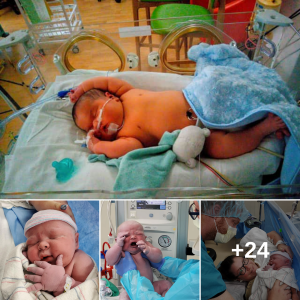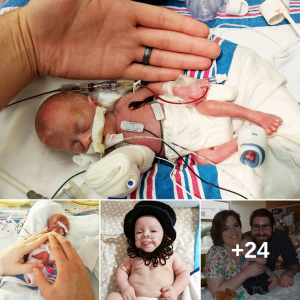- As cold weather sets in across New England each year, juvenile sea turtles, drawn to the globally warmed summer waters off Cape Cod, Massachusetts, are cold-stunned. If not rescued they die.
- Trained volunteers have already brought more than 100 turtles to the New England Aquarium Sea Turtle Rescue Center this autumn. The number of cold-stunned turtles at Cape Cod has been rising during the last decade, with some seasons logging more than 1,000 stranded turtles — many of them critically endangered Kemp’s ridleys.
- Globally, most cold-stunning events occur on the U.S. Atlantic and Gulf coasts: especially in Massachusetts, North Carolina, Florida and Texas. Last year, more than 10,000 turtles were stranded in Texas alone. Cold-stun events have also been reported in Uruguay, Spain, Canada, Ireland, Denmark, France, and the UAE.
- On Cape Cod, the animals are stabilized at the New England Aquarium’s Sea Turtle Center, then transported to longer term care facilities across the U.S., often flown there by volunteer pilots working with Turtles Fly Too. As extreme weather events and ocean warming increase due to climate change, experts predict cold-stunning events will increase too.
A buzzer sounds and the double doors of the New England Aquarium’s Sea Turtle Rescue Center open wide. Trained volunteers step inside carrying banana boxes containing turtles, many near death, that got too cold to survive at sea.
“Cold-stun” season is in full swing in New England.

More than 100 juvenile turtles have come through those doors in the last few days. Rescued from the beaches of Cape Cod, Massachusetts, most are critically endangered Kemp’s ridleys. With expert intervention and rehabilitation, about 80% of these rescues will recover and return to the sea. But the number of cold-stunned strandings has significantly increased in the last decade — likely due to climate change — adding yet another threat to the survival of sea turtle species.
Cape Cod, a hook-shaped peninsula in the northeast U.S. that curls 70 miles into the Atlantic Ocean, is a hot spot for cold-stunned sea turtles. Marine reptiles are ectotherms that rely on their surroundings to stay warm. The shallow summer waters of Cape Cod Bay are perfect for foraging young turtles who, since the 1970s, have been drawn northward in growing numbers into increasingly globally warmed waters.
But by late October, ocean temperatures can abruptly drop below 50° Fahrenheit (10° Celsius). The sea turtles become hypothermic. Too sluggish to swim out of the Cape’s “hook” to warmer southern waters, the turtles are trapped and drift ashore.
At high tides, patrols organized by the Massachusetts Audubon Wellfleet Bay Wildlife Sanctuary search the Cape’s beaches for stranded turtles. In recent years, the seasonal rescue averages have increased to several hundred turtles per season. Last year that number rose to more than 700 cold-stunned live turtles.

“Early in the season, we typically see the smaller Kemp’s ridley and green turtles. The larger loggerhead turtles will start to wash ashore in December, though we saw our first loggerhead of the season [this year] on Thanksgiving Day,” said Dr. Charles Innis, director of animal health at the Aquarium, in a press release. “Every case is unique, and each turtle receives specific care based on its condition.”
The new arrivals barely move when the covers come off the banana boxes. A cadre of skilled volunteers check each turtle’s vital signs, look for injuries, and administer fluids and antibiotics. Every turtle gets x-rayed to check for pneumonia and other health risks. Some will need blood tests or more intensive care.
It might be many months before a turtle is ready for release back to the ocean. At the Aquarium’s facility, the aim is to stabilize the turtles as quickly as possible. Once they can swim and dive in 70-plus degree Fahrenheit water, the turtles are cleared for travel and veterinarians work with the National Oceanic and Atmospheric Administration’s (NOAA) Fisheries Service to identify other facilities located across the U.S. for longer term care. Transport volunteers include private pilots with the non-profit Turtles Fly Too, who take the turtles where they need to go.

“There are so many people and organizations doing all this work to make sure these sea turtles continue to thrive,” said Adam Kennedy, manager of rescue and rehabilitation, who started as a volunteer and is now in his 20th stranding season.
Globally, most cold-stunning events occur on the U.S. Atlantic and Gulf coasts: especially in Massachusetts, North Carolina, Florida and Texas. Last year, more than 10,000 turtles were stranded in Texas alone. Cold-stun events have also been reported in Uruguay, Spain, Canada, Ireland, Denmark, France, and the UAE.

All seven species of the world’s sea turtles are at ever-increasing risk from both natural and human-made threats. In Cape Cod Bay, part of the Gulf of Maine, studies show the waters are warming faster than other global waters, increasing the likelihood that more turtles will travel northward in future and get caught in a cold-stun event.
“Every single one of these turtles that get back in the wild — that’s the goal — will hopefully [help] get their [population] numbers back up, said Kennedy. “So, someday, we won’t keep qualifying Kemp’s ridleys with [the words] ‘critically endangered.’ They’ll just be Kemp’s ridleys.”




